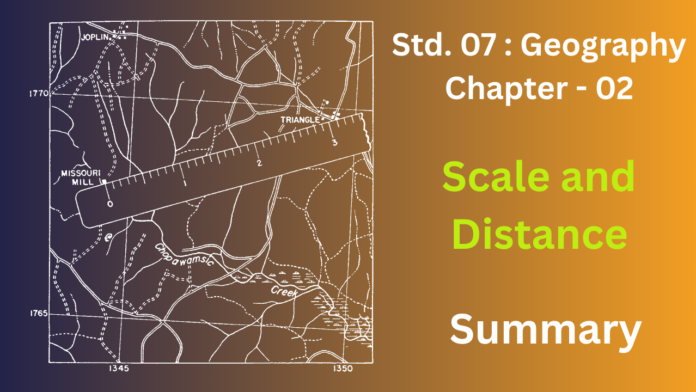The map’s scale is the essential ratio indicating the extent to which the actual ground has been reduced to fit onto the map’s surface. It establishes the direct relationship between a measurement on the map and its equivalent distance in reality.Understanding the map scale is paramount for accurately calculating distances depicted on the map and relating them to their true counterparts on the Earth.
Measuring distances on a map requires different approaches depending on the nature of the path. Direct distances between two points are measured with a ruler, and the map’s scale is then applied for conversion to real-world units. For curvilinear features like roads or rivers, techniques such as tracing with a thread, using a rolling measuring device, or employing dividers in small increments are necessary to follow the contours accurately.
A firm grasp of map scale and distance measurement techniques forms a cornerstone of geographical literacy. These skills enable the interpretation of spatial relationships and the quantification of distances between locations represented on maps, providing indispensable information for diverse applications ranging from navigation and spatial planning to geographical research and analysis.
THINK AND ANSWER
Question
Why do you think that the knowledge of scale is important for reading a map ?
Ans:
Knowing the map scale is vital because it tells you how distances on the map relate to real-world distances. Without it, you can’t accurately measure how far apart things are or understand the true size of features. Scale is the key to using a map for practical purposes like navigation and understanding spatial relationships.
VALUES AND LIFE SKILLS
Question
Your friend has invited you to his house. He has drawn a rough sketch on a paper showing the direction to his house for you.
How does the sketch help you ? What quality of your friend is shown through in this gesture ?
Ans:
The simple map my friend drew gives me a basic idea of where to go, points out important things to look for along the way, shows me which way to turn, and hints at how far it might be to his place. This act of drawing directions shows he’s considerate of my time and effort, wants to be helpful so I don’t get lost, is being friendly by personally guiding me, and is practical in giving me a visual aid.
EXERCISES
A. Fill in the blanks. one has been done for u
B. Match the following
Answer:
C. Choose the correct answer.
1. This is the ratio of distance between two places on a map to the actual distance between the same two places on the ground.
- scale
- map
- globe
- atlas
Ans : Scale
2. This scale is stated in words:
- Verbal
- Statement
- Both of these
- None of these
Ans : Both of these
3. The distance between two points along a straight line can be measured by this method
- Twine
- Ruler
- Compass
- Stick
Ans : Ruler
4. In this fraction, the numerator is always 1.
- Representative Fraction
- Refractive Fraction
- Reduction Fraction
- Reorganization Fraction
Ans : Representative Fraction
D. State whether the following are true or false.
1. Verbal scale is stated in words.
Ans: True.
2. A statement scale consists of a straight line which is divided into lengths.
Ans: False.
Correct : A linear consists of a straight line which is divided into lengths.
3. The numerator in a Representative Fraction expresses the actual distance between two places on the ground.
Ans: False.
Correct : The denominator in a Representative Fraction expresses the actual distance between two places on the ground.
4. The distance along a curved line is measured by a ruler.
Ans: False.
Correct : The Distance along a curved line is measured by a divider.
E. Answer the following questions briefly
Question 1.
What is meant by the scale of a map ?
Ans:
The scale of a map denotes the proportional relationship between a measurement taken on the map and the equivalent distance as it exists on the Earth’s surface. It essentially communicates the degree to which the real world has been shrunk down to be represented on the map.
Consider it as the key to understanding how many actual kilometers or miles correspond to each centimeter or inch you measure on the map. This ratio is vital for correctly interpreting the distances, sizes, and areas of features shown. Without knowing the map’s scale, it’s impossible to accurately determine the true dimensions of the geographical elements depicted.
Question 2.
Which three ways are used to represent the scale of a map?
Ans:
Map scale is represented in three main ways:
- Word Statement: This describes the scale using words, such as “One centimeter equals ten kilometers.”
- Representative Fraction (RF): Expressed as a ratio (e.g., 1:100,000), where the first number represents a unit on the map and the second represents the same unit on the ground.
- Linear or Graphic Scale: This uses a marked line on the map, where each segment corresponds to a specific distance on the Earth’s surface, allowing for direct measurement.
Question 3.
Convert the statement scale 1 cm = loo km into R.F. scale.
Ans:
Question 4.
What method would you use to measure the length of a river ?
Ans:
This map distance is then converted to the actual ground distance by applying the map’s scale, whether it’s a verbal statement, a representative fraction, or a graphical bar.
This method accounts for the river’s curves and bends, yielding a more accurate representation of its true length compared to a direct, straight-line measurement. By adapting to the river’s sinuous form on the map and then using the scale for conversion, the real-world distance can be reliably determined.
F. Answer the following questions in detail.
Question 1.
Describe any two ways of representing a map scale.
Ans:
Two prevalent methods for illustrating map scale are:
- Worded Scale: This approach articulates the scale using a written statement that clearly defines the relationship between a map measurement and its real-world equivalent. For instance, “One inch corresponds to ten miles.” This provides an easily understandable conversion factor, indicating that every inch on the map represents an actual distance of ten miles on the ground. However, direct measurement on the map still necessitates conversion using this statement.
- Graphic Scale: This method employs a visual depiction of the scale through a marked line or bar on the map. This bar is segmented and labeled with corresponding ground distances (e.g., kilometers). To determine the real-world distance between two points on the map, one can measure their separation and then directly compare this measurement to the divisions on the graphic scale. This direct visual comparison eliminates the need for calculations and retains accuracy even if the map undergoes proportional resizing.
Question 2.
Describe the method by which the distance on a curved line is measured.
Ans:
Measuring a curved line on a map involves using a pliable instrument such as a thread or a rolling map measurer. The thread is carefully positioned to follow the curve’s contours, then straightened and its length determined with a ruler. A rolling map measurer is simply traced along the line, and it provides a direct measurement.
The obtained map distance is subsequently converted to the real-world equivalent by applying the map’s scale, which might be expressed verbally, as a ratio, or graphically. This technique ensures that the measurement accurately reflects the actual length of the curved feature on the ground, accounting for its bends and turns.
Question 3.
How is distance on a map measured by a piece of twine?
Ans:
To measure distance on a map with a piece of twine, you would carefully lay the twine along the route you wish to measure, especially if it’s curved like a river or winding road. Once you’ve traced the entire length, mark the starting and ending points on the twine with your fingers or a pen. Then, gently lift the twine and straighten it out. Using a ruler, measure the length of the twine between the two marks.
Finally, to find the actual distance on the ground, you need to use the map’s scale. The scale might be stated in words (like “1 centimeter represents 1 kilometer”), as a ratio (like 1:50,000), or shown as a bar graph with distances marked on it. You would then use this scale to convert the length you measured on the twine into the corresponding real-world distance. For example, if your twine measured 5 centimeters and the scale was 1 cm to 1 km, the actual distance would be 5 kilometers.G Picture study
Look at the picture and answer the questions
Question 1.
What type of scale is shown alongside ?
Ans:
The scale shown is a graphic scale, sometimes called a linear scale. You can tell because it’s a bar that’s marked off in sections, and each section represents a certain distance in the real world, in this case, kilometers. The numbers (0, 50 km, 100 km, and so on) right below the bar tell you what those lengths on the map stand for on the ground. This kind of scale lets you take a measurement right off the map and compare it to the bar to see the actual distance without having to do any math. It’s not a scale that uses words or a fraction.
Question 2.
State a feature of this scale.
Ans:
A key feature of this graphical scale is that it allows for direct measurement of distances on the map without the need for calculations. You can take a distance between two points on the map using a ruler or dividers and then directly compare that length to the bar of the scale to read off the corresponding ground distance in kilometers.
LET’S DO SOMETHING
Question
Look at the plan of a school given here and note the scale given at the top of the plan : 1 cm to 8 m. This verbal scale means that 1 cm on the paper represents 8 m on the ground. Use this scale to find out the length and breadth of the different places shown in the plan.
Ans:
First, for each space shown on the school plan (like a classroom or the playground), you will need to physically measure its length and width on the paper using a ruler. Make sure your measurements are in centimeters and as accurate as possible.
Then, to find the actual size of these spaces in the real world, you will take each centimeter measurement you made on the plan and multiply it by 8. This is because the scale tells us that every single centimeter on the drawing represents 8 meters in reality. The result of this multiplication will give you the actual length and width of each area in meters.


